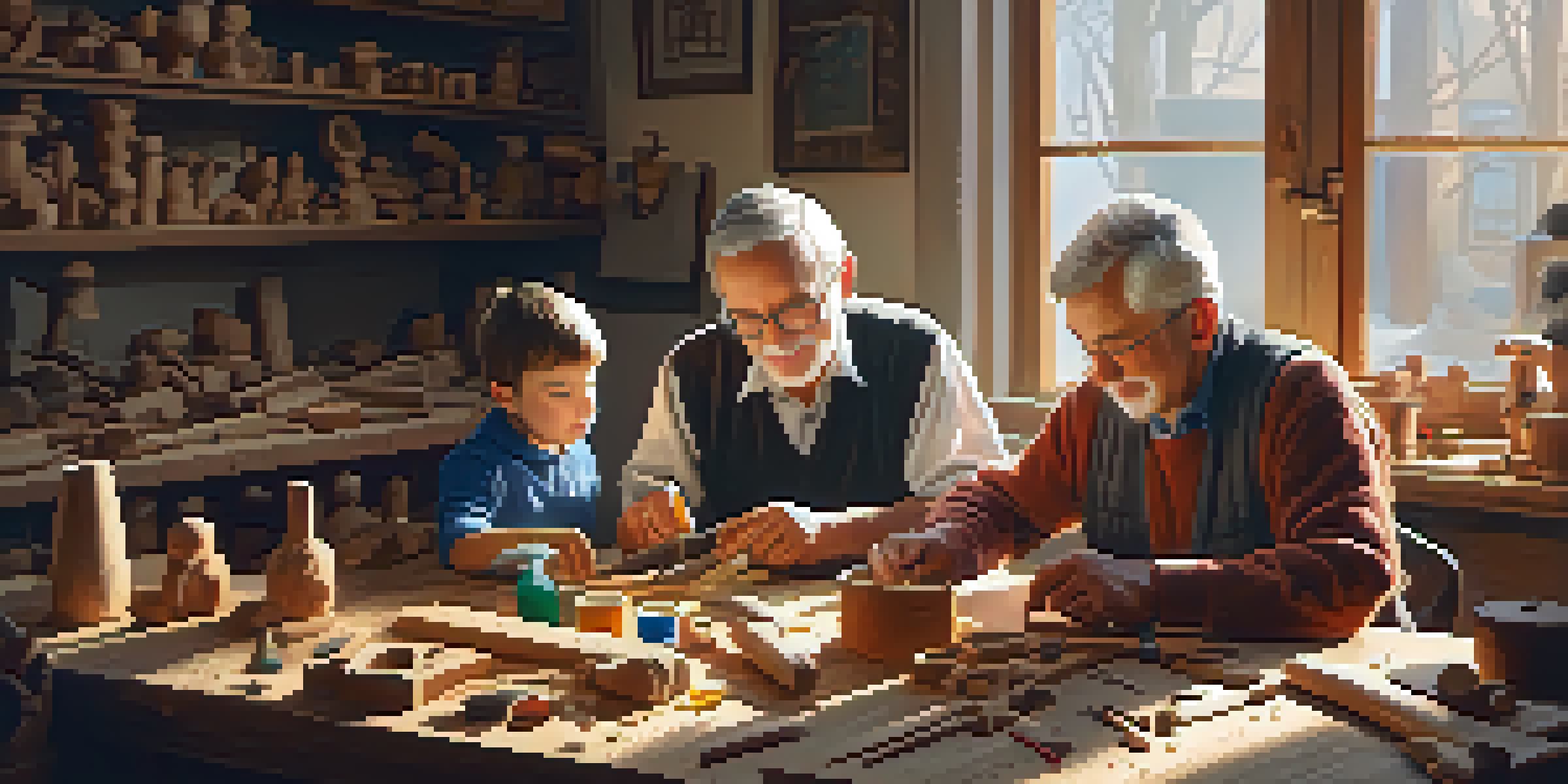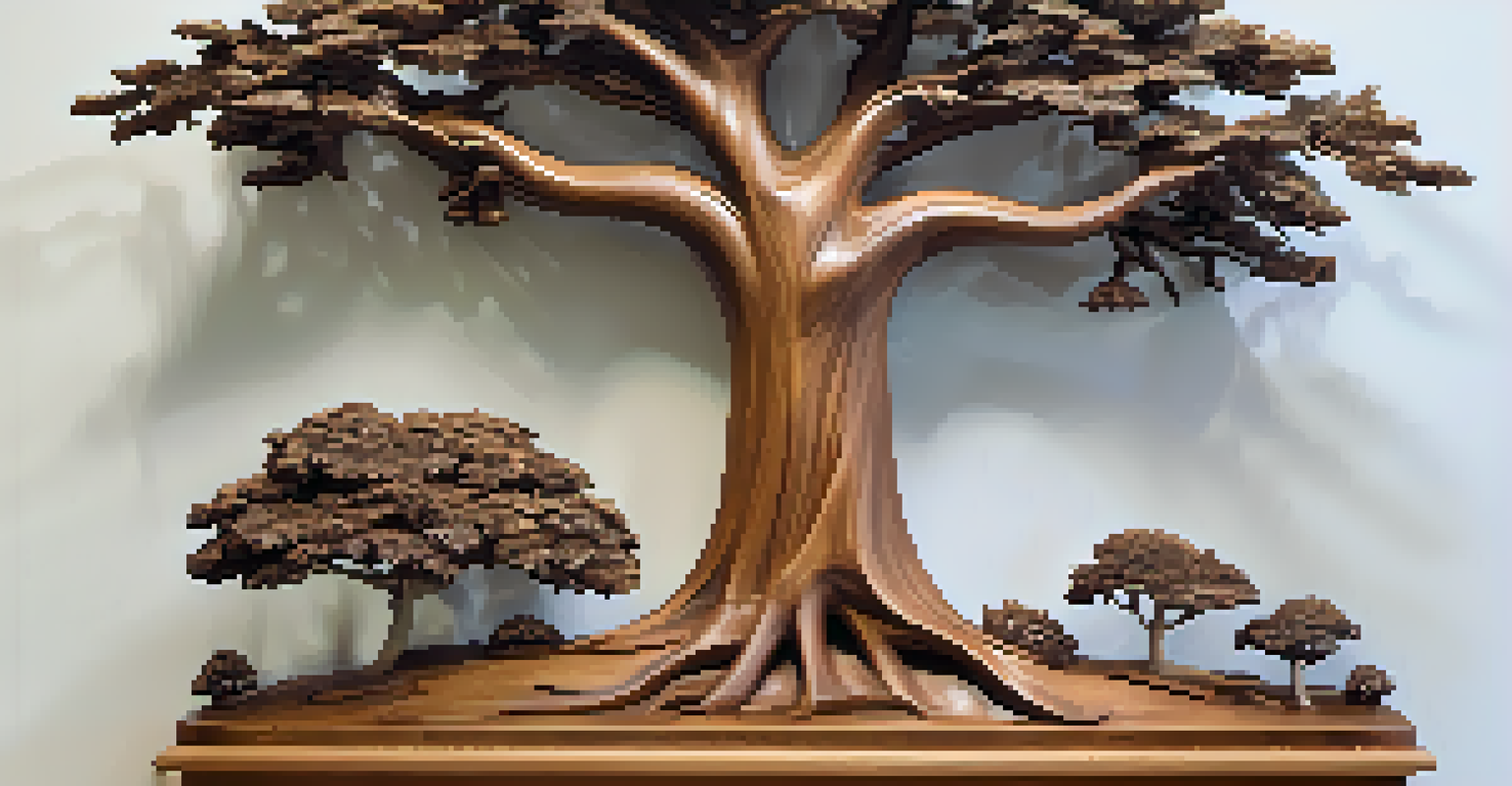The Art of Carving: A Family Tradition to Cherish

Understanding the Tradition of Carving in Families
Carving has been a beloved tradition in many families for generations. It's more than just a craft; it's a way to bond and create lasting memories. Often, families gather to share stories and skills passed down through the years, making the process both educational and joyful.
Carving is a way of touching the wood, of translating the beauty found in nature into a tangible form.
As families come together, they not only learn the intricacies of carving but also connect on a deeper level. Imagine a grandfather teaching his grandchildren the gentle art of shaping wood while sharing tales of his own childhood. This shared experience helps to strengthen family ties and create a unique legacy.
In this fast-paced modern world, carving offers a tranquil escape where creativity flourishes. It's a reminder of the importance of patience and the beauty of craftsmanship, encouraging families to slow down and enjoy the moment together.
Tools of the Trade: Essential Carving Equipment
When starting a carving project, having the right tools is crucial. Basic tools typically include knives, chisels, and gouges, each serving a unique purpose in the carving process. For beginners, a simple whittling knife can be an excellent starting point, allowing for both safety and creativity.

As you progress, you might consider investing in more specialized tools like power carvers or rotary tools. These can open up new possibilities and techniques, but they also require caution and practice. Remember, the goal is to enjoy the process of creating rather than rushing to achieve perfection.
Carving Strengthens Family Bonds
The tradition of carving brings families together, fostering connections through shared experiences and storytelling.
Always prioritize safety by using sharp tools and working in a well-lit area. Carving can be a meditative experience, so taking the time to set up your workspace thoughtfully can enhance not only your safety but also your overall enjoyment of the craft.
Choosing the Right Material for Carving Projects
Selecting the right material is a pivotal step in the carving process. Common choices include wood, soapstone, and even pumpkins for seasonal projects. Each material has its unique characteristics, influencing both the tools you'll use and the final look of your masterpiece.
The best part about carving is the stories we carve into the wood, which become part of our family legacy.
For instance, softwoods like pine are great for beginners due to their ease of carving, while hardwoods like oak present a beautiful challenge for seasoned carvers. On the other hand, soapstone is a fantastic alternative for those who want to explore carving without the risk of tool slips or chips.
Consider what you want to carve when choosing your material. Whether it’s a decorative piece or a functional item, understanding the properties of your chosen medium can lead to successful and satisfying results.
Techniques to Master in the Art of Carving
Mastering carving techniques can take time, but it is part of the joy of the craft. A few essential techniques include whittling, relief carving, and chip carving, each offering a different approach and style. Starting with whittling can help beginners gain confidence and develop their skills gradually.
Relief carving, where the design is carved into a flat surface, allows for more intricate designs and is often used in decorative pieces. Chip carving, on the other hand, focuses on creating patterns by removing small chips of wood, resulting in beautiful, textured surfaces.
Choosing Materials is Key
Selecting the right carving material influences the tools used and the final outcome of your projects.
As you practice, don't be afraid to experiment with different styles. Every carver has a unique approach, and finding yours can be both liberating and fulfilling, adding a personal touch to your creations.
Incorporating Family Stories into Your Carvings
One of the most enriching aspects of carving is the opportunity to tell stories through your work. Each carving can symbolize a family memory, a shared experience, or even a tribute to loved ones. This makes each piece not just an object, but a vessel of cherished memories.
For example, a carving of a tree could represent the family tree, with branches symbolizing different relatives and their stories. This adds depth and meaning to your creations, transforming them into treasured heirlooms.
Encouraging family members to contribute ideas or designs can make the process even more meaningful. Involving everyone in the decision-making fosters a sense of ownership and pride in the final piece, making it a true family treasure.
Celebrating Achievements: Sharing Your Carving Creations
Once your carving is complete, sharing your achievements with family and friends can be incredibly rewarding. Whether displaying your work at home or gifting it to loved ones, this act of sharing helps to celebrate the labor of love that went into each piece.
Consider hosting a small gathering where family members can showcase their carvings. This not only highlights individual accomplishments but also encourages collaboration and inspires others to take up the craft. Sharing stories about the carving process makes the event lively and memorable.
Preserve Carvings for Future Generations
Proper care and documentation of carvings ensure they remain cherished family treasures for years to come.
Social media can also be a great platform to share your work. Joining carving communities online allows you to connect with fellow enthusiasts, exchange tips, and inspire others with your creations.
Preserving Family Carvings for Future Generations
As you create beautiful carvings, it's essential to consider how to preserve them for future generations. Proper care and storage can help maintain the integrity of your carvings, ensuring they remain family treasures for years to come. Regular dusting and avoiding direct sunlight can prevent fading and damage.
You might also want to consider documenting the stories behind each piece. Keeping a journal or digital record detailing the inspiration, techniques, and memories associated with each carving adds a layer of significance that future generations will appreciate.

Emphasizing the importance of these carvings to younger family members can instill a sense of pride and responsibility. By engaging them in discussions about preservation, you help ensure that this cherished tradition continues for many more years.